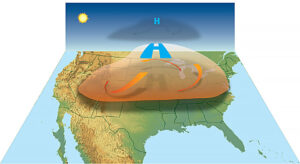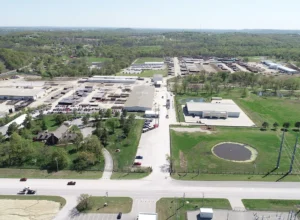The following lyrics are from a 1980s song by recording artist, Robert Palmer:
“Your lights are on, but you’re not home
Your mind is not your own
Your heart sweats, your body shakes
Another kiss is what it takes
You can’t sleep, you can’t eat
There’s no doubt, you’re in deep
Your throat is tight, you can’t breathe
Another kiss is all you need
Whoa, you like to think that you’re immune to the stuff, oh yeah
It’s closer to the truth to say you can’t get enough
You know you’re gonna have to face it, you’re addicted to love”
As it turns out, there is a scientific basis for this poetic postulation.
Thinking about the person with whom you are in love, especially in a new relationship, prompts activity in the ventral tegmental area (VTA) of the brain, which unleashes a torrent of the neurotransmitter dopamine, also referred to as the “pleasure chemical,” into the brain’s reward (or pleasure) centers, which are the caudate nucleus and nucleus accumbens. This gives the lover a high not unlike the effect of narcotics, such as cocaine.

The brain of a person in love also encounters an increase in the stress hormone norepinephrine, which drives up heart rate and blood pressure. These responses are similar to those experienced by people using powerful addictive stimulants such as methamphetamine.
The brain of a person “in love,” experiences a reduction in the neurotransmitter serotonin. Serotonin provides a sense of being in control, and it protects us against the anxiety of uncertainty and instability. When it decreases, our sense of being in control also decreases, and we become obsessed with things that disrupt our certainty and security. Thus the term “crazy in love” is rooted in science.
Our brain’s reasoning center, the prefrontal cortex, moves into “low gear” when we’re in love. Concurrently, activity in the amygdala, which is a crucial component of the brain’s threat-response system, slows down. The combination of these brain responses results in a willingness to take more risks, even ones that would otherwise seem reckless to us.
Researchers from Yale University found some striking neurological differences between two different varieties of love—romantic and selfless.
According to Judson Brewer, Director of Research at the Center for Mindfulness and an associate professor at UMass Medical School, “Experientially, romantic love leaves you wanting more, you want that next date, you want the next tweet, you want that next text.” Anthropologist Helen Fisher, author of Why We Love, said “Romantic love is an obsession, it possesses you.”
Fisher further found that rejection by a lover elicits specific neural activity. “When you’re dumped, the one thing you want is to just forget this human being and move ahead with your life, but no, you just love them harder,” Fisher said. “The reward system for wanting, for motivation, for craving for focus, becomes more active when you can’t get what you want.”
The Yale research, published in the journal Brain and Behavior, found that selfless love, which arises from compassion and a deep desire for someone else’s happiness and well-being, without receiving anything in return, deactivates the reward areas associated with romantic love.
The researchers at Yale also found that selfless love deactivated “self-oriented” thinking in the brain, a thought process that causes us to ask how a certain situation will affect us.
Love and lust are separate but overlapping neural responses in the brain. They both produce a “high;” they affect many of the same parts of the brain, and they’re both addictive. However, they are distinct enough that you can be in love with one while lusting after another.
The differences become more dramatic with time. Scientists have discovered that the brains of people in long-term relationships show increased activity in the ventral pallidum, which is a region containing an abundance of oxytocin and vasopressin receptors that facilitate long-term pair-bonding and attachment.
Research with the prairie vole has shown that promiscuity and monogamy can be chemically influenced. One type of vole is predisposed to promiscuity and the other type, monogamy. When scientists injected the promiscuous variety of vole with oxytocin and vasopressin, the promiscuous voles became monogamous . Studies have shown that men who inhaled oxytocin temporarily became more empathetic, sensitive, and cuddly.
There are some key neurological differences in the way romantic love occurs in men and women. Men in love tend to show the most activity in visual processing areas, including the area associated with sexual arousal.
Women in love, on the other hand, show greater activity in the region of the brain associated with memory, called the hippocampus, as well as more brain activity in regions associated with reward, emotion, and attention.
In the final analysis, one might say it is all about hormones. Perhaps, we can have “chemistry” with anyone. But what happens after the initial biochemical reaction is up to you.










